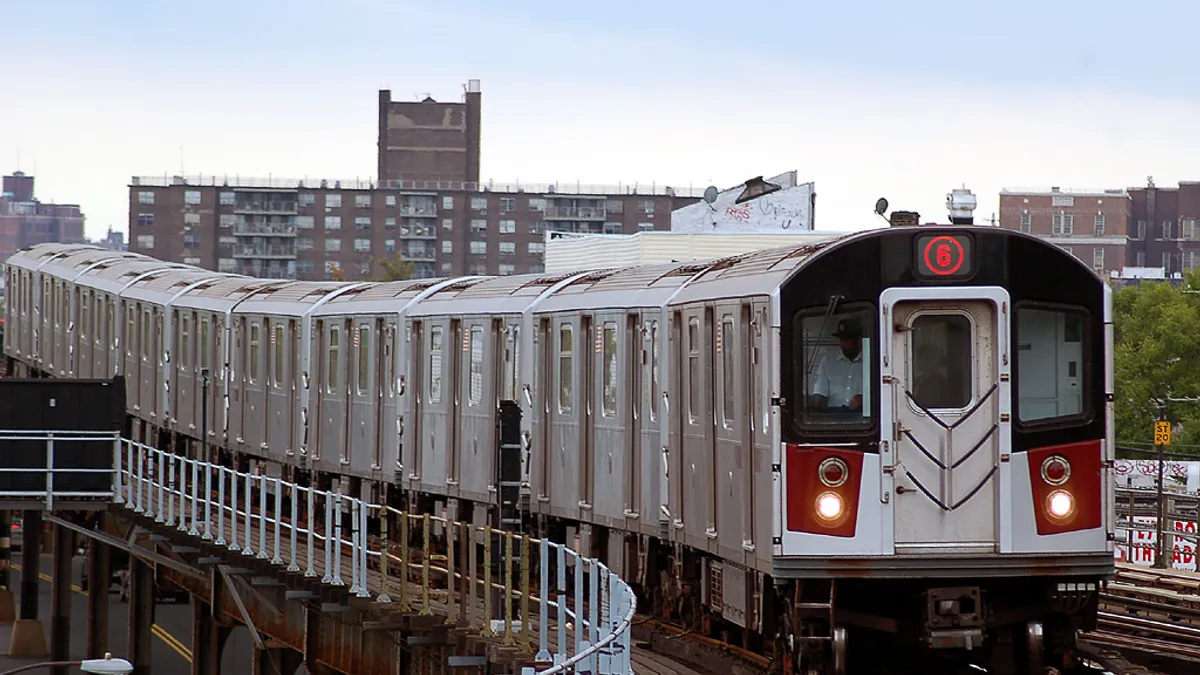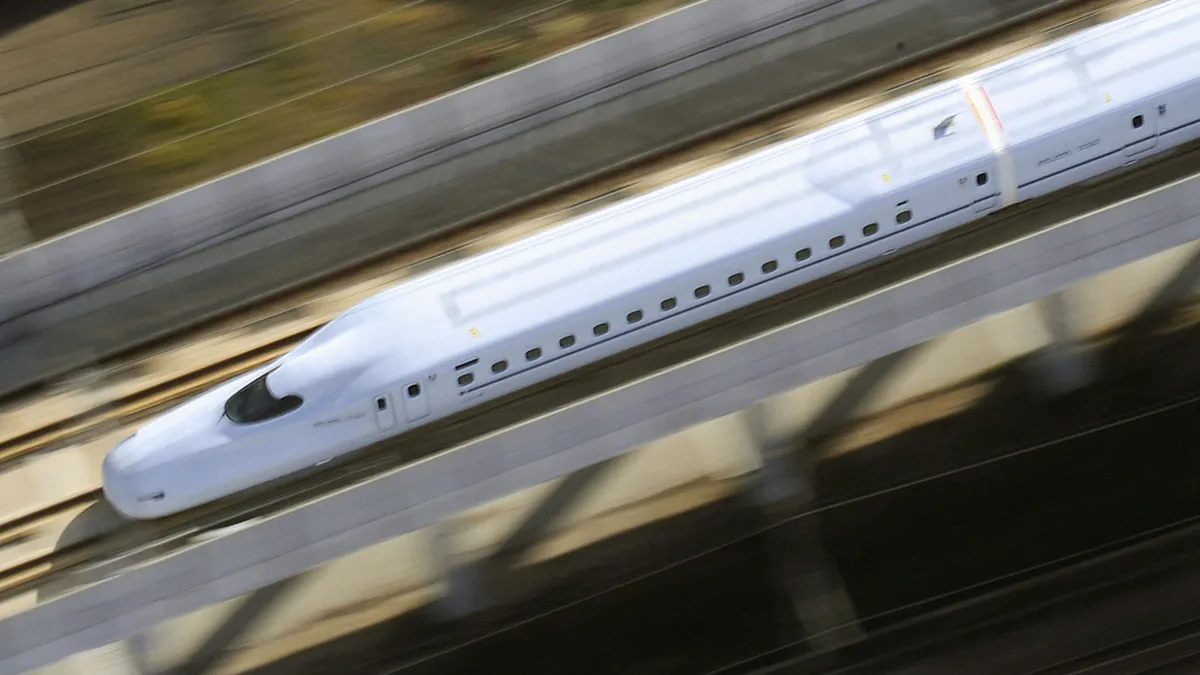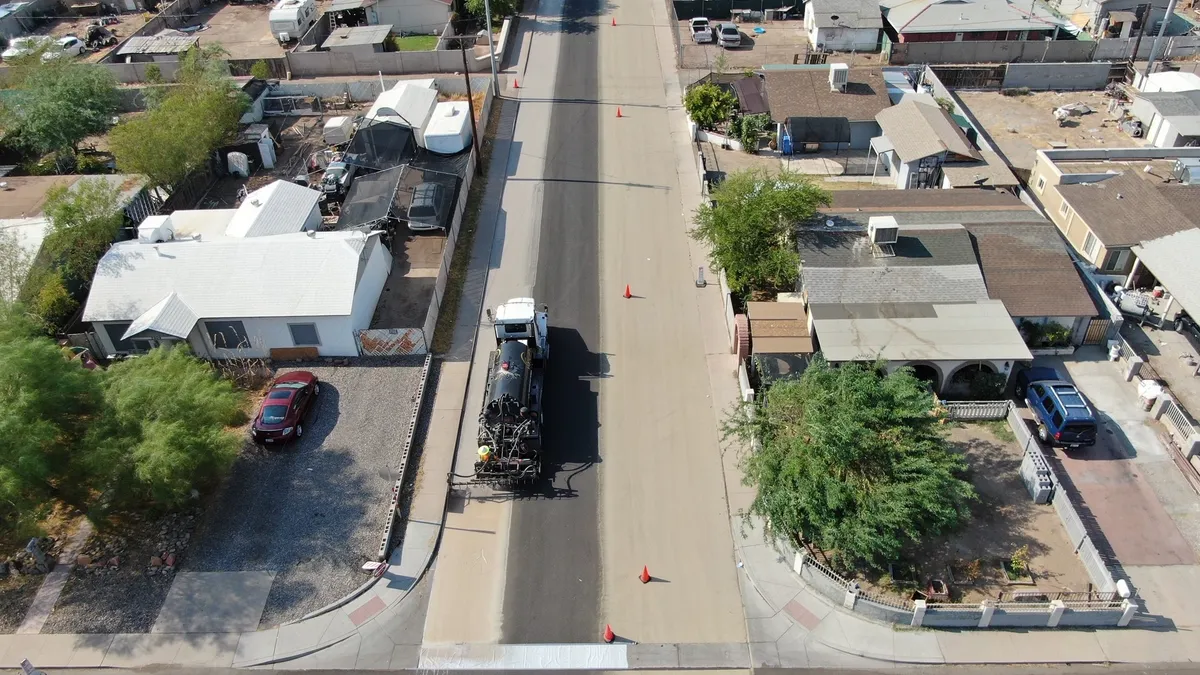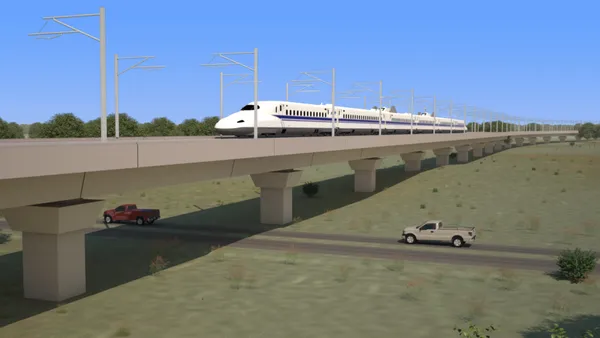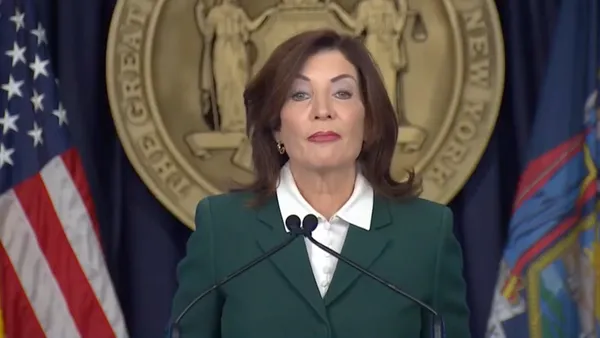Dive Brief:
- As part of its newly announced $51.5 billion 2020-2024 Capital Improvement Plan, the New York Metropolitan Transportation Authority (MTA) committed $5.2 billion to making subway stations accessible in accordance with the Americans with Disabilities Act (ADA).
- The project involves making 70 stations ADA accessible by placing new elevators and ramps at up to 66 stations and accelerating work at four stations where MTA already committed to accessibility improvements.
- Once the upgrades are in place, riders will be no more than two stops away from an accessible station. Stations that serve over 60% of the subway system's total ridership will be accessible upon project completion.
Dive Insight:
"It's a significant investment and it's one that's been a really long time coming. It's huge and a lot of the credit goes to the folks who have pushing for this... for a long time," Nick Sifuentes, executive director of Tri-State Transportation Campaign, told Smart Cities Dive.
Still, questions remain until MTA releases the full details of the plan, which an agency spokesperson says will happen next week in time for the MTA board meeting on Wednesday.
"One question is what's the timeline for getting the 70 stations done. And the second is what is the funding strategy here? Where is the funding going to come from and is money guaranteed? Is it going to keep the MTA from having to borrow and go into additional significant debt, and what can be done to limit the amount of debt?" Sifuentes said.
An MTA press release for the entire Capital Improvement Plan says the largest funding source ($25 billion) comes from bonds backed by new revenue streams in this year's budget. That includes $15 billion from the congestion pricing plan that legislators passed in April but has not yet gone into effect.
Last year, the Office of New York City Comptroller Scott M. Stringer released a report saying that 200,000 disabled New Yorkers lived in a neighborhood without a single accessible subway station. It said the system had the lowest share of accessible stations of any metropolitan rail network in the country.
"Ensuring equitable access to public transit is critical to making our city work for every New Yorker, and the Comptroller has long called for robust and comprehensive investments to address inaccessibility in our transit system. We are encouraged by the Capital Plan's accessibility investments and we look forward to reviewing the details of the plan in full," Hazel Crampton-Hays, the office's press secretary, told Smart Cities Dive via email.
Other accessibility advocates, such as those involved with TransitCenter's Access Denied campaign, also applaud the plan but note the execution will be important.
"The steps that the MTA outlined yesterday including investing in accessible stations are very welcome. We will be watching to make sure not only that the elevators get built over the next five years but that the elevators are also maintained. We have a big problem with elevator maintenance here in the city," Colin Wright, senior advocacy associate at TransitCenter, told Smart Cities Dive.
Wright explained that MTA is working on an accessibility pilot station program. The agency soon will detail a suite of improvements to help riders who are deaf, have visual impairment and/or cognitive impairments at every station.
The improvements in the Capital Improvement Plan are "a good start but it is not enough. We need to see every station become accessible. The MTA put out its Fast Forward plan, which pledged to make every station accessible by 2034, and we plan to hold them to that," Wright said.
The Fast Forward plan was released last year to repair and modernize the subway system. It followed the the governor's declaration of a state of emergency for the subway system in 2017 amid increases in failures and delays and a derailment that injured more than 30 riders. The Fast Forward plan pledged 50 new accessible stations in the first five years and the completion of all stations by 2034.
Advocates note that the subway system is not the only transit in need of accessibility improvements. Although MTA touts all of its buses as accessible, the streets and sidewalks leading to the routes are not necessarily accessible. For example, uneven curbs or a lack of curb cuts can make it difficult for people with disabilities to get to bus stops.
"It's the obligation of the city to do better make sure these stops are accessible," Sifuentes said, acknowledging that much of the onus is on the city's Department of Transportation and not just MTA. "We also need to make sure we're reforming Access-A-Ride. That's important if a person can't access a bus or the subways. Access-A-Ride doesn't always get places on time and it is quite expensive."



